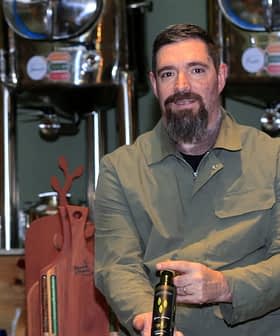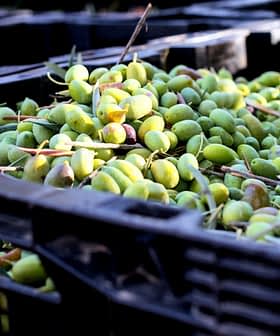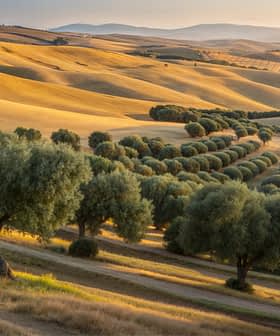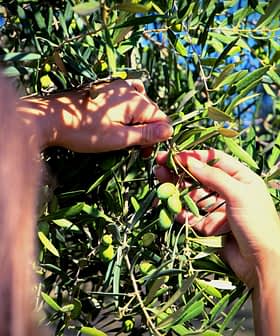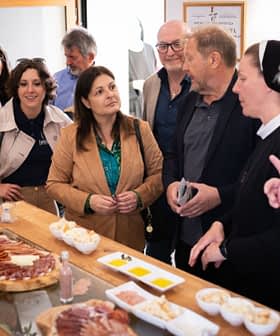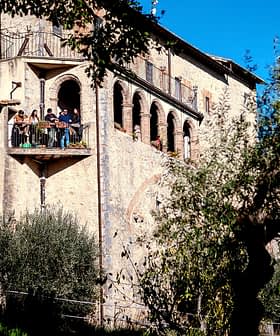Travel Notes: Magnificent Siurana
The author spent seven days in Siurana and the Priorat, exploring olive groves and mills with a focus on Arbequina olives and Priorat wine. The trip included visits to various villages and vineyards, as well as experiencing local cuisine and vinegars, highlighting the beauty and richness of the region.
I AM JUST BACK from seven full days in Siurana and the Priorat. Seven full days, five of them high in the bush, far from Reus, the Siurana’s capitol, and Tarragona, Reus’ sister city. As Modena is to Bologna, Reus is to Tarragona. Five full days as opposed to an obligatory touch-and-go with someone who works for someone who works for someone else at some distinguished mill in some region located somewhere in the Mediterranean Basin. There are visits of mere tangential propriety, and then there are visits of depth and substance, and this visit was definitely the latter.
I do this a lot over the years, but this trip was by far the most substantial of all my time in groves and mills.
The Siurana region of Catalonia (Catalunya, in Catalan) has got to be the most heartachingly gorgeous thing I will ever see, and I have seen some pretty gorgeous places. My favorite places seem always to be olive groves. The Priorat, surrounded completely by Siurana, is what I can only describe as the rarified, most visually intense part of Siurana, and here I must try to curb my hyperbole. I’m sorry — I doubt I will succeed.
Priorat, as I am sure you know, is where a lot of the greatest red wine made comes from. Priorat wine stands as an embarrassment of Catalan riches, in addition to the Arbequina olive oil that defines Siurana. For the record, there are two other indigenous cultivars contributing but a fraction to the total Siurana olive oil production.
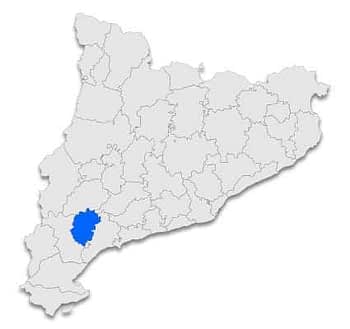
Priorat
Priorat is a comarca (county) in Catalonia, Spain.
I ate a lot of Arbequina olives on this trip, and you surely know how delicious they are. I mean, I love olives, but Arbequina cured olives have to be my absolute favorite because of their intense nuttiness and the indescribable sway they hold over me, more than any other cured olive. These were crisper than any I recall. I love a crisp, cured olive. I love Arbequina olives even more than I love Lucques and Tanche (Nyons) olives, and that’s a mouthful, because Lucques and Tanches are superlative.
But I never tasted Arbequina early harvest olive oil as fine as that from the mill at La Palma d’Ebre, just outside the Priorat to the west. Thick, buttery, NEW oil that shrieked with personality, rusticity, tomato and black pepper that I hadn’t experienced in any Arbequina over the years. I would have guessed it was Picual! Surely this was not subtle, sweet, nutty Arbequina!
This oil is stored in ‘trulls’ – deep wells in the floor of a room that date back to the time when Arabs ruled the countryside, the 700s. These trulls got their name from the ‘trolls’ that supposedly, if not definitely, resided within them. Like a troll under a bridge!
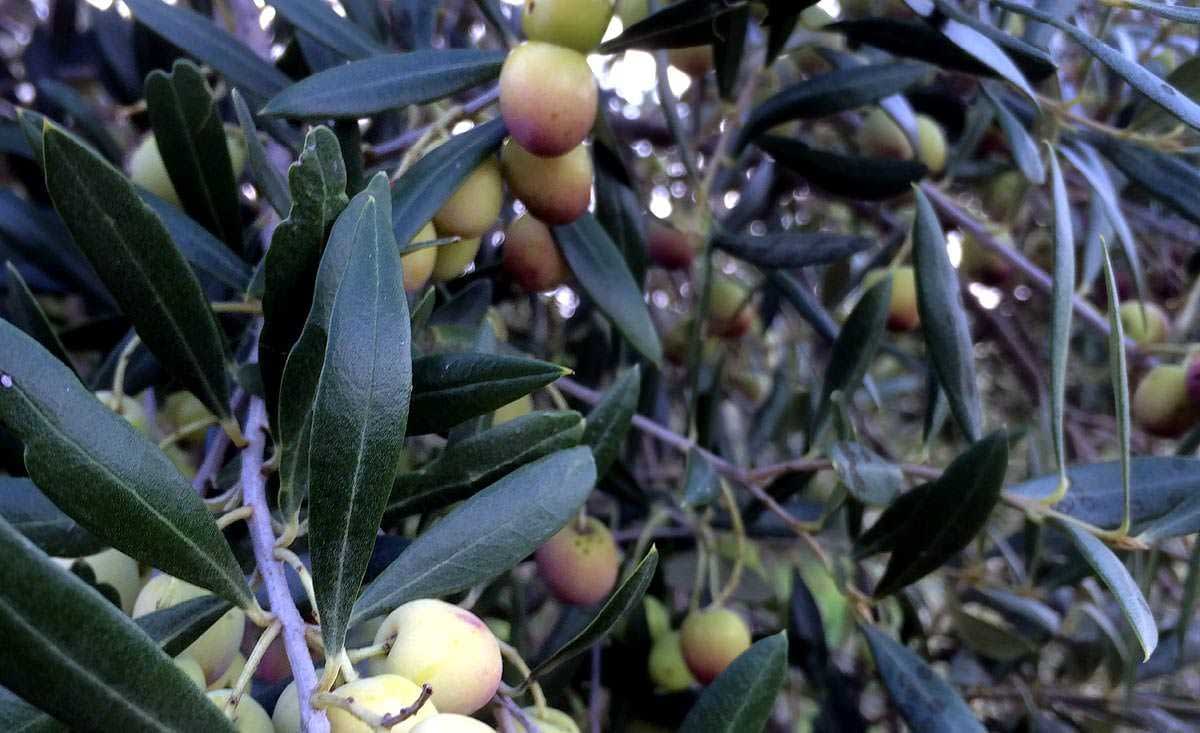
Along with its commanding cliffs, the legendary Arbequina olives define Siurana’s landscape (all photos Steven Jenkins)
Pere Mateo, full disclosure, the executive director of the Siurana cooperative UNIO and its subsidiary Olis De Catalunya, is a personal friend of mine for more than a decade, having been introduced to me by my dear friend Bill Devin who died almost a decade ago. Bill Devin is a story all by himself. He was responsible for the export of the great Catalan wines husbanded by Pere and his co-op, as well as for the grand Siurana DOP olive oil that Fairway imports for our 15 stores.
In addition to the Priorat wine, Pere’s company is responsible for the quality and export of the region’s Garnacha blanca, which has rocketed to rockstar status, and is becoming evermore sold, drunk and talked about. Also the dreamy Montsant red wine I personally buy by the case these days. Montsant is the north side of the Priorat, and the mountains that give the wine its name are particularly imposing, looming and beautiful.
And, oh my heavens, will I ever be importing for Fairway Market the co-op’s Siurana Marcona and Largueta almonds, and the hazelnuts, all of which are packed roasted in flat, vacuum-packed, clear plastic sleeves that are beyond irresistible. I am going to sell the heck out of these Siurana nuts.
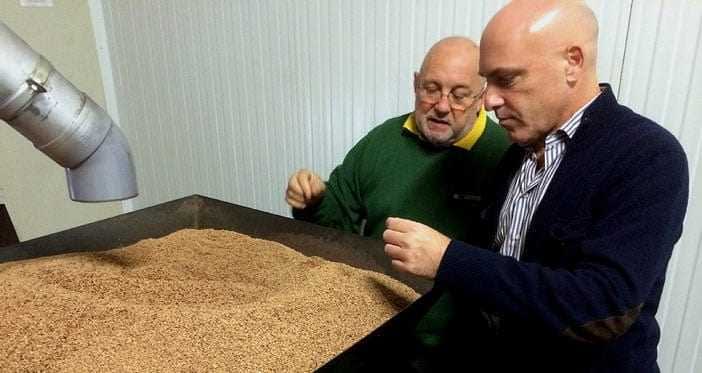
Pere Mateo (right), CEO UNIO/Olis de Catalunya with Josep Mragas, director dried fruits and nuts for the cooperative.
Pere, his #1 man Oscar and I were all over Siurana. Oscar is responsible for the export of the wines of Olis De Catalunya. We were in groves, wineries and olive oil mills at more villages than one should be able to remember, and each of them was notable. I could have been making one of those superficial visits, but instead we were on a mission. We wanted to visit Siurana’s most talented olive farmers and winemakers, each of whom is a part of the 20,000-farmer co-op I referred to.
And we did.
We spent hours at Poboleda with Jordi, the smartest winemaker I ever talked to. Jordi’s Priorat red is called Llicorella, which identifies it as a product of the shale of his severely sloping groves. This can hardly be referred to as soil, this shale. Jordi says you can’t make great Priorat wine from vineyards that aren’t on shale slopes. It reminded me of the vineyards of Cote-Rotie and Val d’Aosta. Remarkable terrain. This black, crumbly shale — never saw anything like it.
We were at Torroja, at Gratallops where Oscar and I had a lunch I shall never forget – a perfectly composed salad with pomegranate and an Arbequina and apple balsamic vinaigrette, a squash soup I could have made a meal of, and a plate of bacalla (salt cod, the Catalan spelling; bacalao in Castilian Spanish) and roasted leek I could have sworn it was fresh cod.

Golden Arbequina
At Els Guiamets, at Masroig, at Falset (the capitol of the Priorat), at Escaladei, the fascinating ruins and remarkable site chosen for the oldest monastery in Catalonia. Carthusian monks first arrived at this site in the 1200s, and the stone monastery was standing by 1500. This architectural wonder and archaeological treasure trove I found to be absolutely stunning. I am no more riveted by Segesta in Western Sicily or by Carthage in Tunisia.
We hung out with the vinegar makers at Mollerussa, just east of Lleida (Lerida, in Spanish). The Badia family, Agusti the father, about my age (64), and his daughters Marta and Judith. Their facility is old, old, old, and beautiful and fascinating, and what they have done with vinegar is like nothing I have ever experienced. I am a self-confessed vinegar freak. I adore good vinegar, and I appreciate the making of it as much as I appreciate the making of olive oil and wine.
The Badia family should patent their process, and if I tried to explain it to you now, we would lose the thread of this essay. I import their entire range of vinegars – Moscatell, Vermouth (the Catalan production of vermouth is one of the benchmarks — one of the defining virtues of Catalonia. Catalans love Vermouth, Cava, Chardonnay, Cabernet Sauvignon, and I cannot wait for the arrival of their ‘bittersweets’ — so named because of the Badia family’s addition of a certain measure of Merlot wine must and Riesling wine must to these wine vinegars. Much as the price and quality of Modenese balsamic vinegar is determined and measured by the quantity of Lambrusco wine grape must combined with balsamic vinegar, it is the must that gives these vinegars their depth of fragrance and flavor.
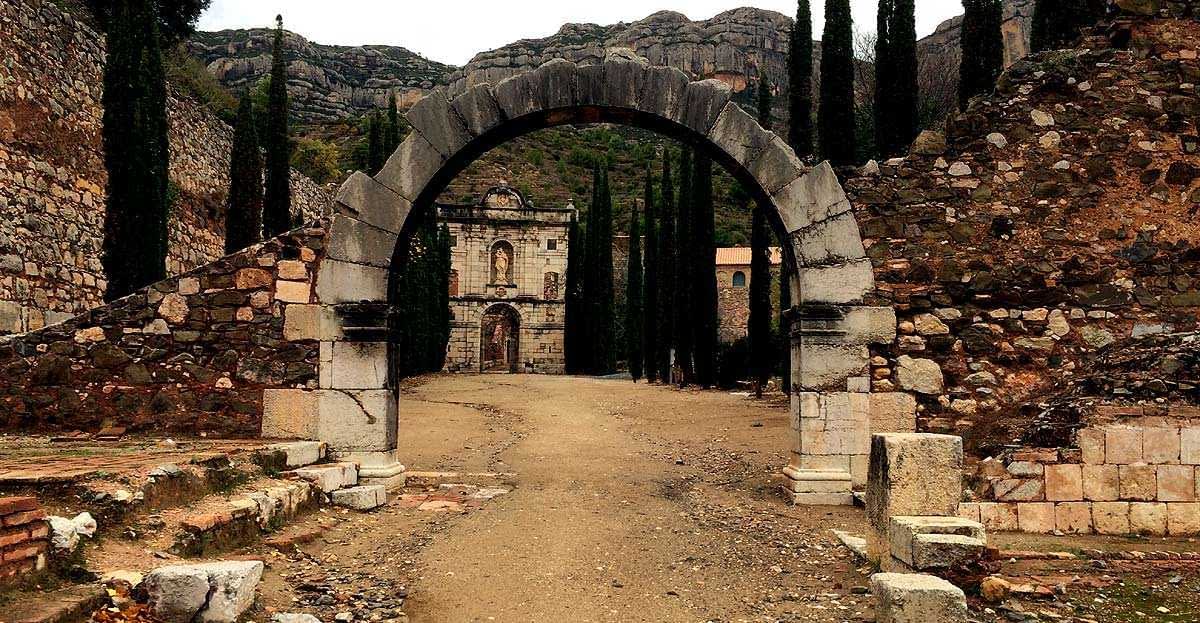
The Monastery of Scala Dei
Its story goes back to the 12th century, when Carthusian monks came from Provence to found their order’s first monastery on the Iberian peninsula
Here at Mollerussa it was explained to me that Agusti Badia’s great-great-grandfather was one of many in the area who traveled by horse cart to Barcelona for the 1888 exposition in order to abscond with some of the tons of iron brought there by Gustave Eiffel in his attempt to persuade the city to commission the construction of Eiffel’s tower. They thought the notion of a tower was strange and unmoved, they refused. So Eiffel went to the Paris Universal Exposition in 1889, and the rest is history. The Badia family vinegar facility has Eiffel iron holding it up and all across the ceiling.
I want to tell you more, but this report is too long already, and you have been very patient. Last points must be made:
Reus is one handsome, sophisticated city of around 100,000 Catalan souls. Tarragona, replete with its marvelous Roman antiquity, is slightly larger, and at least as handsome, and has a rambla that leads to, and ends on, a dramatic promenade high above the sea. The citizens of Reus are as competitive with, and dismissive of, Tarragona as the Modenese are of Bologna. Reus is where Gaudi was born, and the private house he was born in announces the fact with a striking civic exterior placard — also has a sign put up by the building’s owners that reads in Catalan, “This is a private home. Please do not ring the bell.”

Steven Jenkins
Barcelona is even more captivating today than it has been in each of the 25 years I’ve been spending time there, often twice a year. Pere took us to his pal Daniel Rueda’s pintxo joint called Tapeo, just down the Barri Gòtic block that houses the Picasso Museum. This tapas bar is such a local hero that you need a reservation. A reservation for a tapas bar! Of all of the tapas bars I have frequented from San Sebastian to Sevilla, this Tapeo blew my socks off like no other. Daniel Rueda is a rockstar. Sweetbreads with fresh ceps (cepes, porcini, steinpilze). Pork short ribs with a mustard and honey reduction. Flattened squares of grilled leek laid out in a sort of checkerboard fashion. His Catalan desserts are like none anywhere else in Catalonia, or all of Spain, for that matter.
That being said, I am defenseless against sweetbreads, short ribs and leeks, I must tell you. And, yes – I consumed more than my share of Jamón Ibérico de Bellota. At every opportunity, to be sure. And pa amb tomàquet! Tomato and raw garlic-rubbed bread drizzled with olive oil. A way of life. Anchovies from Escala. Siurana olive oil. Is this the world’s finest?


